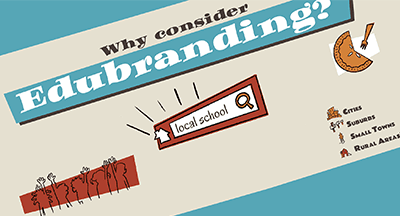Building Skills and Schedules: Arena Scheduling Boosts Engagement
BY Lindsey Canny
A major part of the adult college experience is picking classes and building a schedule, so why are K12 schools still content with cranking out hundreds of premade schedules for their students every year?
What is Arena Scheduling?
Arena scheduling is the process by which students can select their classes in the periods they want to take them, building their own daily routines. In the student information system (SIS), all classes are listed with available time slots, and students sign in on a first-come, first-served basis to fill that term’s class periods with the subjects of their choice. The SIS uses automated tools to compare student schedules and compare schedules to students' core requirements for graduation to build a really strong, but enjoyable, schedule for the student.Throughout this process, educators and counselors double-check whether students are eligible to take certain courses, are meeting graduation requirements, and that there are no conflicts between class times. Once all of the details are ironed out, they take the student-made schedules and create the official schedule.
Arena scheduling builds skills and schedules
The benefits of arena scheduling are much more than just the perk of getting choice classes at preferred times. The process of making a plan which impacts day-to-day life for months to come gives students the chance to build skills and mindsets that can support them for years to come.Autonomy and accountability
Because arena scheduling gives kids the challenge of choosing classes, picking the order they happen in their school day, and having to move the schedule around if one of their picks doesn’t work out, the process is a good way for students to flex personal autonomy in a low-risk way. It also encourages personal accountability in that, unless students step up to get their picks in early, they will have to fill their schedule with classes that are open, but may not be their first or second choice.Emotional management
When hundreds of kids are all trying to get sweet spots in fun classes, not everyone will get their preferred choices. Arena scheduling automatically comes with the need for emotional regulation and managing of expectations — not only for students, but for their parents as well. One of the most important parts of successful arena scheduling is firm adherence to the ground rules of first-come, first-served and not changing schedules outside of the add/drop period. This way, students and parents will know out of the gates that the best way to get the best schedule is to be prompt and flexible.Planning: big-brain mode
After their first go at arena scheduling, more students may want to try out for the chess club because both require thinking several steps ahead of the game. Planning current wants against future needs is an invaluable skill to build for adulthood, and creating a personal schedule can help kids practice that skill with real stakes. For instance, Johnny can schedule fourth-period lunch so he can eat with his friends if he wants, but that might mean he’ll need to take phys. ed. first thing in the morning. And sure, Susie can take two study halls first semester, but then she’ll need to double up on English credits next semester.Arena scheduling’s added perks
Accommodations for special circumstances
Now more than ever, students aren’t just students. High schoolers have internships, youth apprenticeships, work lives, or advanced coursework outside of school. For these kids, arena scheduling has the flexibility of scheduling classes around times they need to have free for out-of-school activities.Even if a student is just being a student, special considerations can be given for kids who may have learning difficulties or certain learning accommodations. Arena scheduling would allow these students to choose a specific teacher for a difficult subject, pick classes with a smaller enrollment numbers for one-on-one help, or to ensure a study hall is scheduled right when they need it. That’s the beauty of arena scheduling: everything is personal and customizable.
Behind-the-scenes streamlining
Students aren’t the only ones seeing benefits from arena scheduling: the advisory office gets a piece of the pie as well. While there will still be a lot of time and effort needed to set up the arena, add rosters, and compile course information, the arduous task of creating a workable schedule for each student in the school is taken care of by the students themselves, and the initial setup can be completed in spring, before summer break hits.The arena is for everyone
If arena-style scheduling can work each year for universities with tens of thousands of students, school districts big or small can also make it fit for their student population.Large student populations
For schools with a large population, if the process seems too time-consuming or difficult to manage, the first-come, first-served arena can be set up for upperclassmen to pick the classes they need for graduation, while freshmen and sophomores can still have premade schedules set up with general prerequisite courses.Small student populations
For smaller districts, who have more manageable populations or limited class offerings, another way to go about arena scheduling is to pre-load required classes into students’ schedules and then have them go in and select their own electives, with seniors choosing first for graduation requirements. This way, students still get the benefit of personal choice and autonomy, but half of the work is already taken care of.Enter the Arena
While setting up arena scheduling takes some work to get off the ground, it won’t be a Herculean effort. By breaking out of the scheduling status quo, schools can begin putting students in control of their own futures and getting them ready for whatever comes next.Follow-up: More Arena Scheduling resources
What is Arena Scheduling?Arena Scheduling from Home
4 Ways to Build a Better Schedule
WHAT'S NEXT FOR YOUR EDTECH? The right combo of tools & support retains staff and serves students better. We'd love to help. Visit skyward.com/get-started to learn more.

|
Lindsey Canny Edtech Thought Leader |
Lindsey Canny is a marketing copywriter for Skyward, Inc., a school administration software provider based in Stevens Point, WI. Prior to working at Skyward, Lindsey spent eight years teaching 9th and 10th grade English within the Stevens Point community. Outside of work she enjoys reading books and spending time with her husband and cat.




